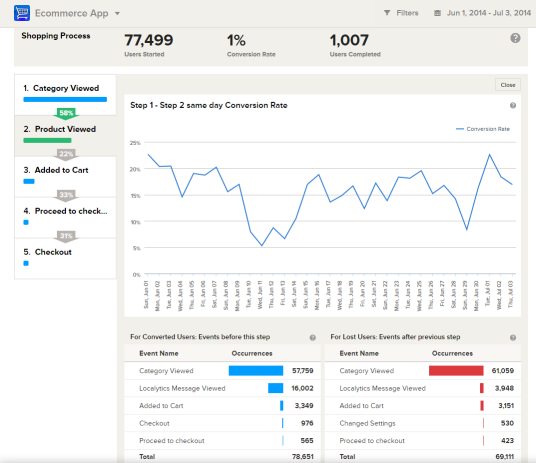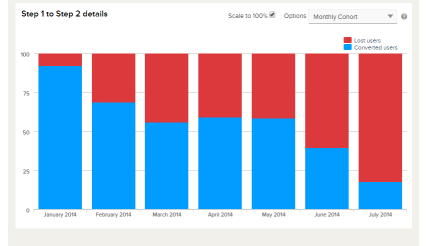Funnels let you analyze a collection of events, such as a user sharing their first article or successfully changing options on a settings screen.
Funnels provide a mechanism for analyzing key processes within an application. Most apps have a clear goal such as getting a user to make a purchase or upgrade to a paid subscription; these often involve multiple events. Use a funnel to analyze any collection of events.
Funnels are retroactive and respect the same filters and date ranges as other screens so it is possible to experiment with many different funnels and see changes over time. Funnels provide very granular data. More than just counts and filters, use filters to explore successful and unsuccessful conversions at every step to identify what is causing success vs failure.
See the guide on Analyzing Funnels for an in-depth exploration.

